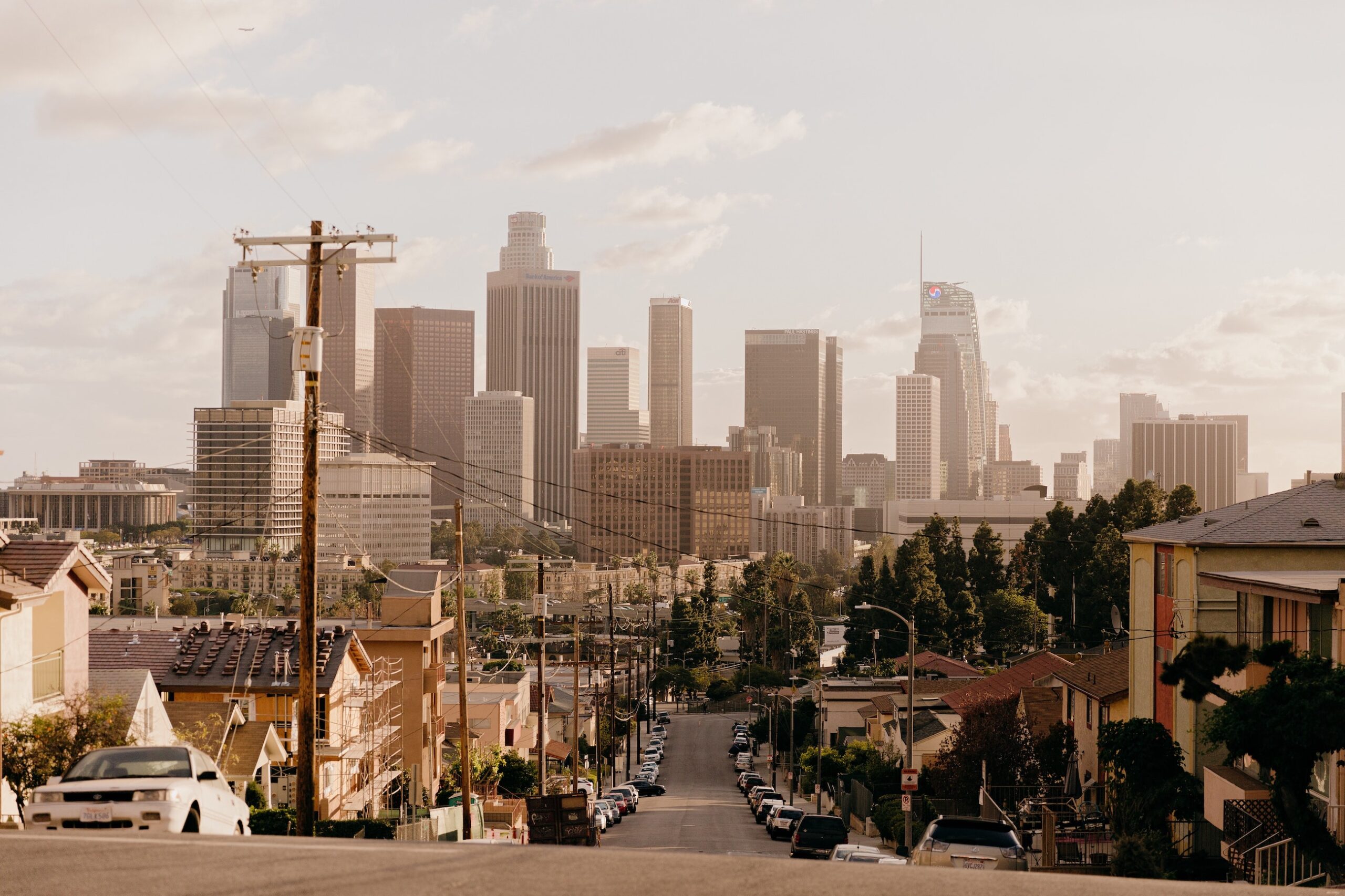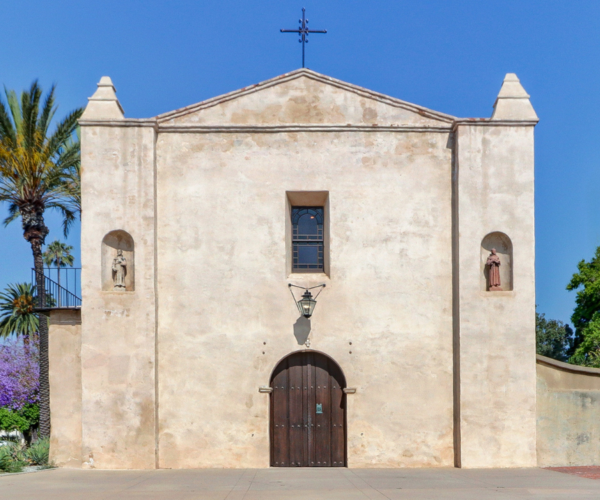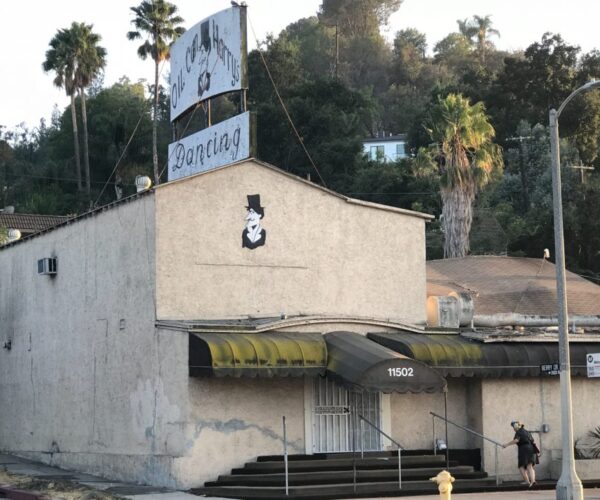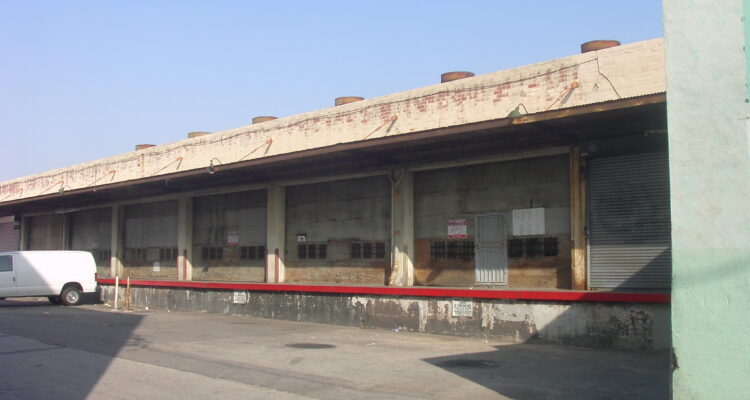
Place
City Market and Market Chinatown District
In 2018, the Los Angeles City Council approved a new mixed-use development that would require demolition of the historic City Market complex.
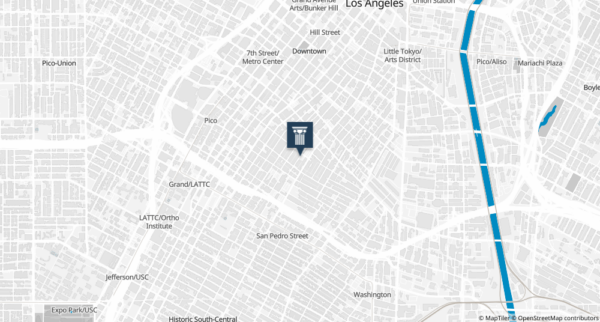
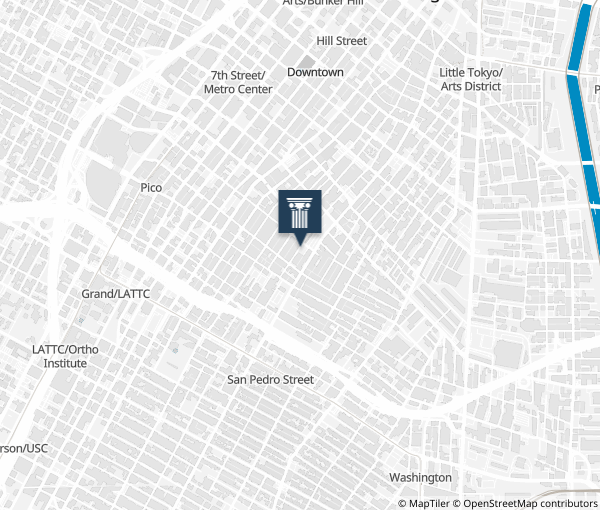
Place Details
Address
Architect
Neighborhood
Year
Style
Property Type
Government Officials
Community
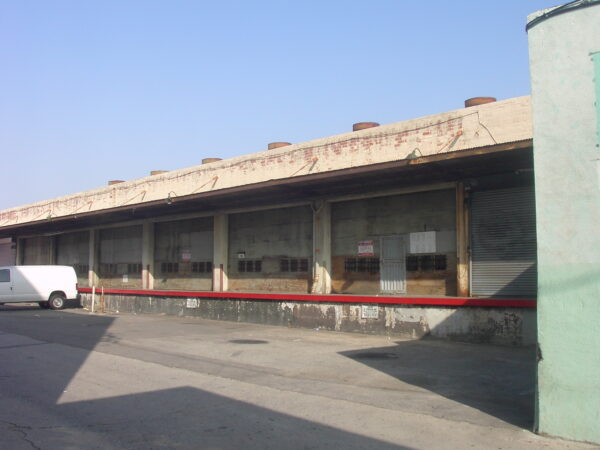
Rear of 1100 block of South San Pedro Street. Photo by Marcello Vavala/L.A. Conservancy
Overview
Located east of Downtown, the City Market complex represents the largest existing collection of pre-World War II commercial and community buildings associated with the Chinese community in Los Angeles. A group of Chinese and some Japanese vendors came together in the early 1900s to organize and develop a thriving wholesale produce marketplace in response to growing demand within the city.
In 2013, a mixed-use project to redevelop the historic City Market complex between East 9th, East 11th, San Pedro and San Julian streets, was proposed by a consortium of property owners and developers in Los Angeles’ Fashion District. Their goal was to transform the once-thriving historic City Market of Los Angeles into a $1 billion mixed-use complex.
The project was approved by the City Council in 2018. In 2024, the project team was granted a 20-year period to complete the terms of a new development agreement.
The Downtown-based former wholesale produce retailer secured a revised development agreement with the city in March 2024 to build City Market Los Angeles. The 1.7 million-square-foot development, approved in 2018, would replace a more than century-old produce market that closed in 2009, including 91,700-square feet of commercial buildings, according to an environmental review.
Plans for the project include 945 homes, a 210-room hotel, a 312,000-square-foot school or office campus, 272,000 square feet of offices and 224,900 square feet of shops and restaurants, including a movie theater with 744 seats.
About This Place
About This Place
Designed by prominent Los Angeles architectural firm Morgan & Walls, the original City Market complex was constructed in 1909. The market was oriented around the perimeter of the block bounded by San Julian, San Pedro, Ninth, and Eleventh Streets. It originally consisted of eight brick and reinforced concrete industrial buildings, organized around central loading docks. Each building was simple in design, with a pair of architecturally distinguished mid-block structures with Mission Revival-inspired towers and corner belvederes. Additional buildings were constructed over time, which occupy much of the adjacent block directly south of Eleventh Street.
The project site contains the City Market and Market Chinatown District, which the former Community Redevelopment Agency identified as eligible for listing in the National Register of Historic Places in 1992. The district was believed to be the largest collection of pre-World War II commercial buildings associated with the Chinese community in Los Angeles.
At that time, each of the eight original City Market structures were largely intact, and the adjacent City Market Area Chinese Grouping contained twelve nearby structures from the same period of significance. The survey indicated that “further remodeling and demolition pose serious threats to the buildings in this grouping.”
Since the 1992 survey, six buildings within the City Market Area Chinese Grouping had been significantly altered or demolished, leaving just half of the original district intact.
Our Position
As proposed, the project would demolish approximately 91,000 square feet of the existing structures and construct up to 1.7 million square feet. Only one of the original City Market buildings (Building 5, 1122 San Julian Street) would be retained and incorporated into the new development.
The Conservancy is deeply concerned over the pre-emptive demolition of several City Market buildings approximately six months before the release of the Notice of Preparation for the City Market Los Angeles Project. The action represented a flagrant abuse of the California Environmental Quality Act (CEQA), which exists to avoid or minimize adverse impacts through thoughtful consideration of alternative approaches to a project.
The Conservancy also believes that the Draft Environmental Impact Report (EIR) contained flawed analysis and cannot be used for purposes of adequate environmental review. First, the Draft EIR establishes boundaries for a Study Area that do not accurately reflect the presence of potential historic resources. Second, it fails to evaluate the potential significance of and impacts to all structures in the previously identified City Market Area Chinese Grouping. And third, it applies a flawed methodology to the evaluation of a potential historic district and potential district contributors by focusing on thresholds for architectural significance rather than historic or cultural significance.
While the loss of the larger City Market buildings is unfortunate, the 2012 demolition did not negate the significance of what remained. On the contrary, the remaining intact industrial buildings could be seen as even more significant given their rarity.
In our comments on the 2015 Draft EIR, we urged the City to require the preparation of a revised Cultural Resources evaluation and to circulate a Supplemental Draft EIR based on those findings. We pressed the City to mandate consideration of preservation alternatives and mitigation measures.
Though the City published a Recirculated Draft EIR in 2016, it did not include any revisions to its flawed Cultural Resources evaluation. We are deeply disappointed that the City did not use this opportunity to produce a new study on the proposed project’s impacts to historic resources and will continue to press for further analysis.
